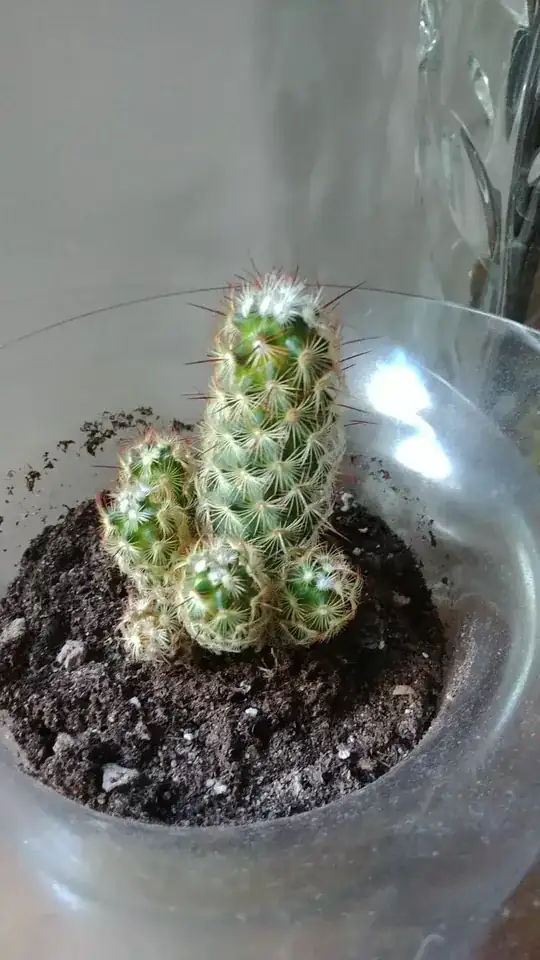I'm a first time cactus owner. My flatmate is watering it while I'm out on long holiday, and she sent me a picture showing that the spines are yellowing. I've read this can be a sign of old age, but want to double check that nothing's wrong so we can take action to save my plant.
- It has been sitting inside the flat by a window. We live in Southern England, so the sunlight is not very harsh
- Since the yellowing started, she's removed it from the window into more filtered lighting so we can figure out what the problem is
- The plant gets watered every two weeks with a reasonable dose of plant food. I pour about 100 ml of water on it, which passes right through the loose cactus/succulent soil through the pot drainage; so really we can say the soil gets dampened every two weeks. I don't suspect over-watering.
- I've had the cactus for about 1-2 months and am not sure how old it was when I bought it. The spines were definitely all white when I purchased it.
- My roommate has seen no other ailments, sunburn, or signs of fungus/bugs on the plant
Let me know if this is anything to be concerned about! Thanks.
